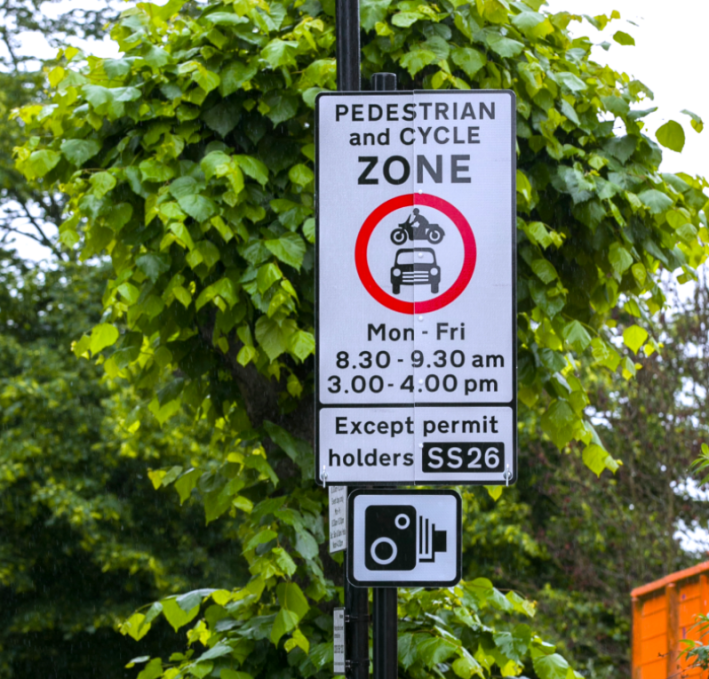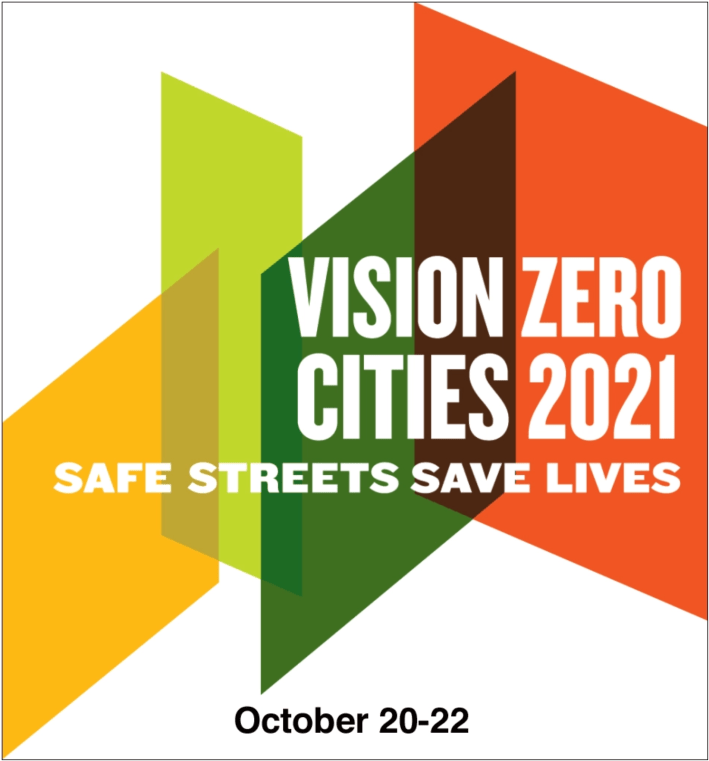Editor’s Note: A version of this article will appear in Transportation Alternatives’s Vision Zero Cities Journal as part of the 2021 Vision Zero Cities Conference, Oct. 20-22, including walking and biking tours on Oct. 22. You can register for the virtual conference (and for New York City residents, in-person tours) at visionzerocities.org.
It’s autumn again, which means back to school and back to the all-important school run. At approximately the same time every day, nearly every child needs to travel to and from school, an enormous undertaking that spans the city. For taking up such a small slice of the day, the school run — and the modes of transportation that are chosen for this journey — has a disproportionate impact on the sustainable travel and road safety outcomes for a city.
Research from the United Kingdom has found that one in four cars on the road at peak times are generated by the school run and that children face an increased risk of being fatally struck by a vehicle during this period. We also know that there has been a generational shift away from active travel during the school run. As the percentage of children walking and cycling to school has decreased from decade to decade and generation to generation, we are seeing negative implications for not only children’s safety, but also for their general physical and mental wellbeing, and their psychosocial development.
So, how do we address issues, including poor health outcomes caused by inactivity, motor vehicle danger, and pollution, that are associated with today’s school run? In the U.K., at least, part of the answer lies in implementing "School Streets."
School Streets are a type of timed traffic-restriction initiative which originated in the U.K. and are increasingly gaining prominence in cities around the world, from Auckland to Toronto. In the U.K., a School Street is a road, or section of road, in front of a school that becomes closed to motor vehicle traffic during school drop-off and pick-up times. The traffic restriction at the heart of the initiative is relatively simple: during the operating hours, motor vehicles are not permitted to enter a School Street zone. Though the zone is generally not physically blocked in Hackney, fixed and mobile cameras enforce the restriction. School Streets place limitations on vehicle access to the road, but they don’t prohibit all vehicles; residents and businesses located within the zone as well as limited special groups, such as emergency response vehicles, can be considered for a special exemption.
One of the first local authorities to investigate the School Streets concept was Hackney Council, a municipal transportation authority in London, England, where I work as the principal sustainable transport planner. Hackney’s impetus for developing the program came from the desire to support and protect children — some of our most vulnerable road users — during their journey to school. We aimed to do this with three main goals: to improve the road safety conditions outside of school gates by reducing traffic at peak times, to facilitate the uptake of active-travel behavior in local children, and to improve the air quality around the school community during the school run.
Motivated by these aims, as well as valuable political support from our mayor and cabinet member for transport, our team decided to test the School Streets concept with a pilot program.

The Hackney School Streets pilot ran from 2017 to 2019. It consisted of trialing the School Streets restrictions at five schools, each with a distinct road layout, over an 18 month experimental period. The initiatives were extensively monitored during the pilot in order to evaluate their impact and determine whether or not we should make the restrictions permanent fixtures.
When the results from the Hackney School Streets pilot came in, they exceeded even our expectations. With only minor variations in outcome among the different road layouts, the five pilot schools experienced remarkable improvements. Participating schools saw a 68 percent decrease in traffic outside of school gates during the initiatives’ operating hours as well as a 74 percent decrease in vehicle-tailpipe emissions of oxides of nitrogen (NOx), PM10, and PM2.5. The schools in the pilot also saw significant changes in travel behaviors: a 51 percent increase in cycling and a 30 percent increase in walking-to-school rates.
The pilots served as a valuable opportunity to test approaches, and we picked up several key insights which assisted in our quick scaling of the program. First, we learned that conducting early and extensive community outreach could go a long way in mitigating complaints and confusion from residents later down the line. Considering potential impacts of the program was also important: by keeping the size of the zones and hours of operation small, there were fewer negative repercussions from the local community and weaker opposition. Finally, standardizing branding and the hours of operation across all School Streets increased driver compliance significantly, and allowed Hackney residents to anticipate and understand the restrictions.
As a result of the successful outcomes of the pilot, Hackney has heavily invested in School Streets, making the experimental measures from the pilot initiatives permanent and rapidly expanding the program to schools across the borough. As of autumn 2021, Hackney operates 48 School Streets, the largest program of its kind, which provide benefits to over 20,000 local pupils every day.

Hackney recognises the transformative benefits that School Streets can have for children, parents, carers, teachers, and the wider community, and we have made it a priority to share our experience and knowledge with others in the industry. Notably, this year we have released the 2021 School Streets Toolkit for Professionals. This free, publicly available resource is a practical, step-by-step guide which contains sections on mythbusting, frequently asked questions, and lessons learned, while covering in extensive detail topics such as enforcement, exemptions and budgeting. The toolkit has been created to assist transportation practitioners who are considering, or actively implementing, School Street initiatives and programs in their own communities and is appropriate for an international audience.
The journey to school should be a safe, healthy, and enjoyable experience for children and their families. But, owing to the prominence of cars, it often isn’t. When the school run panders to and is dominated by motor vehicles, there are negative implications for the health and safety of our youngest and most vulnerable citizens. This status quo is no longer acceptable, and we are refusing to accept it. With Hackney’s School Streets zones, the school run is no longer a time of stress and danger; instead, kids and parents spill out of the school and into public space, where they are provided with better environments for safe, active, and independent travel. This is our new status quo.
Doolin O’Reilly works as the principal sustainable transport planner at Hackney Council, where her team runs Europe’s largest School Streets program. For more information about the School Streets Toolkit, or Hackney’s experience with developing and implementing its School Street program, contact Doolin O’Reilly at doolin.oreilly@hackney.gov.uk or visit https://hackney.gov.uk/school-streets.








